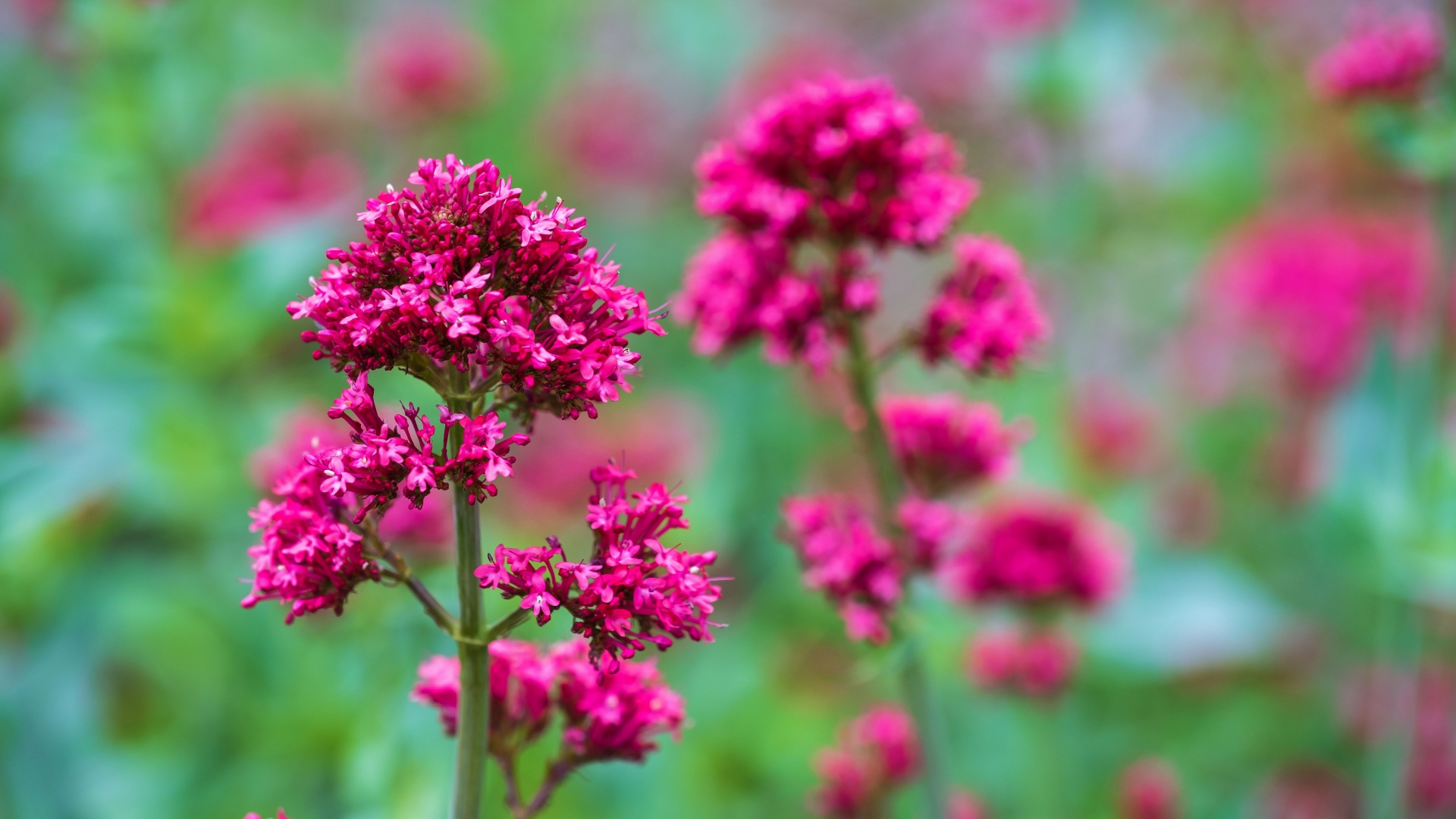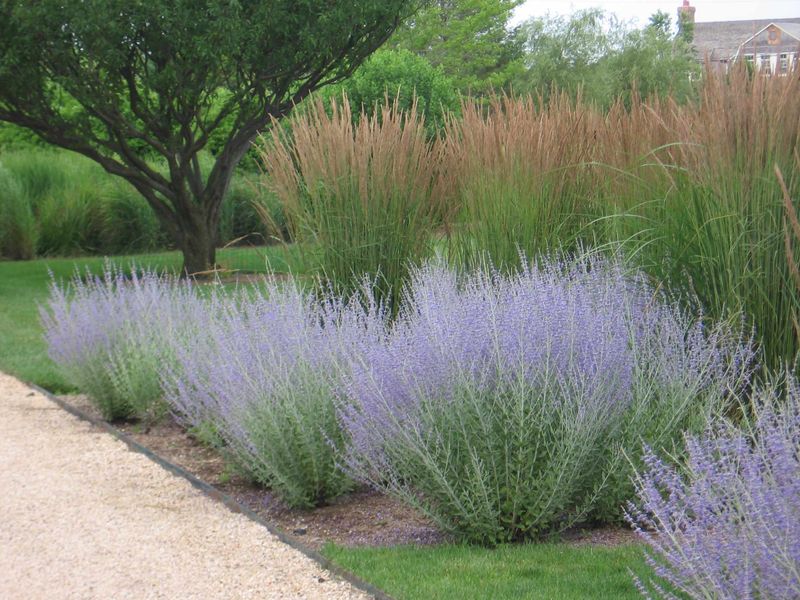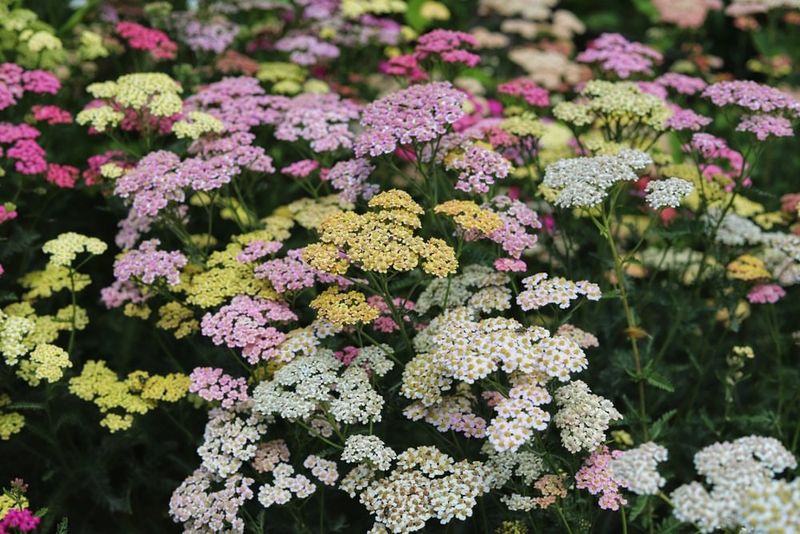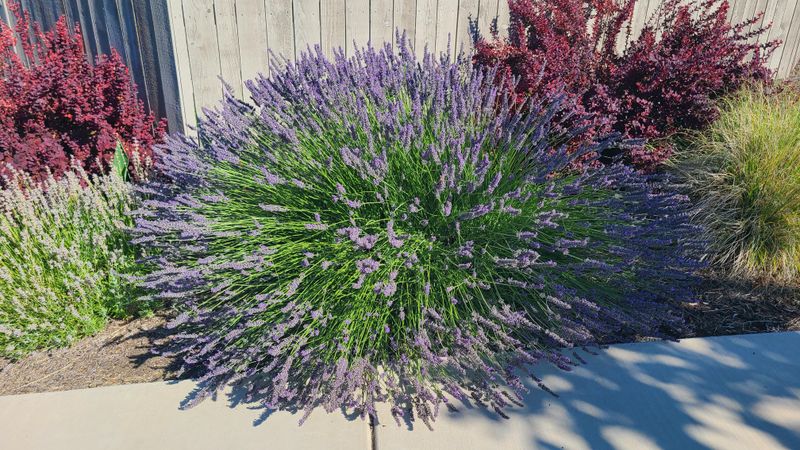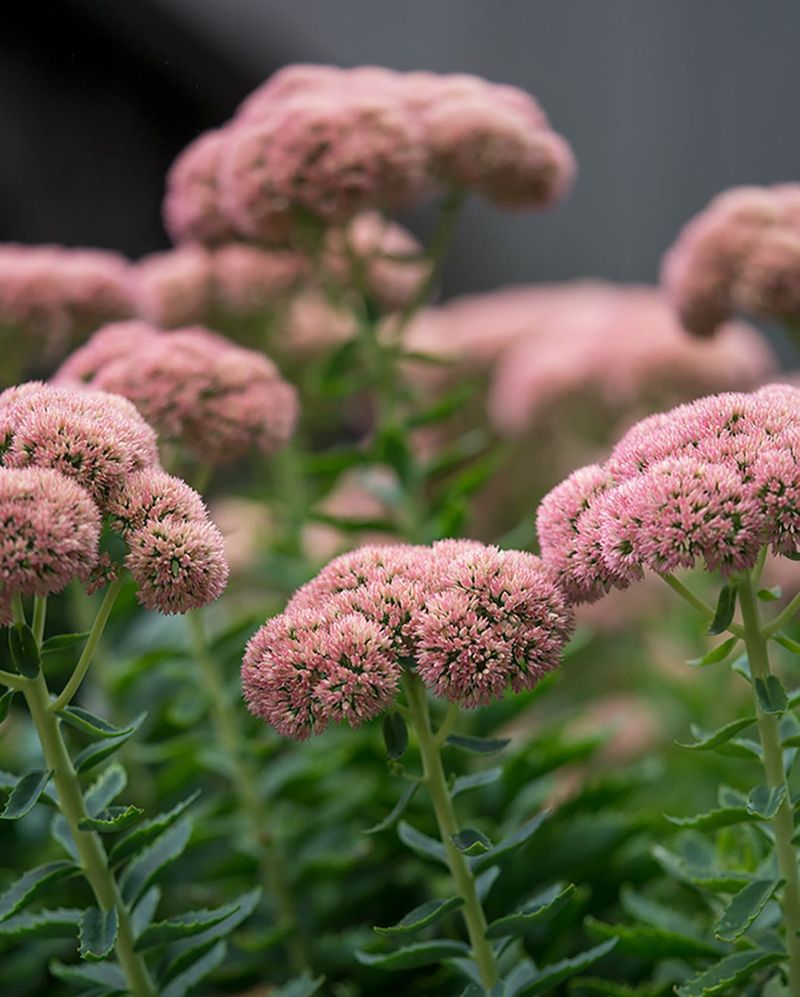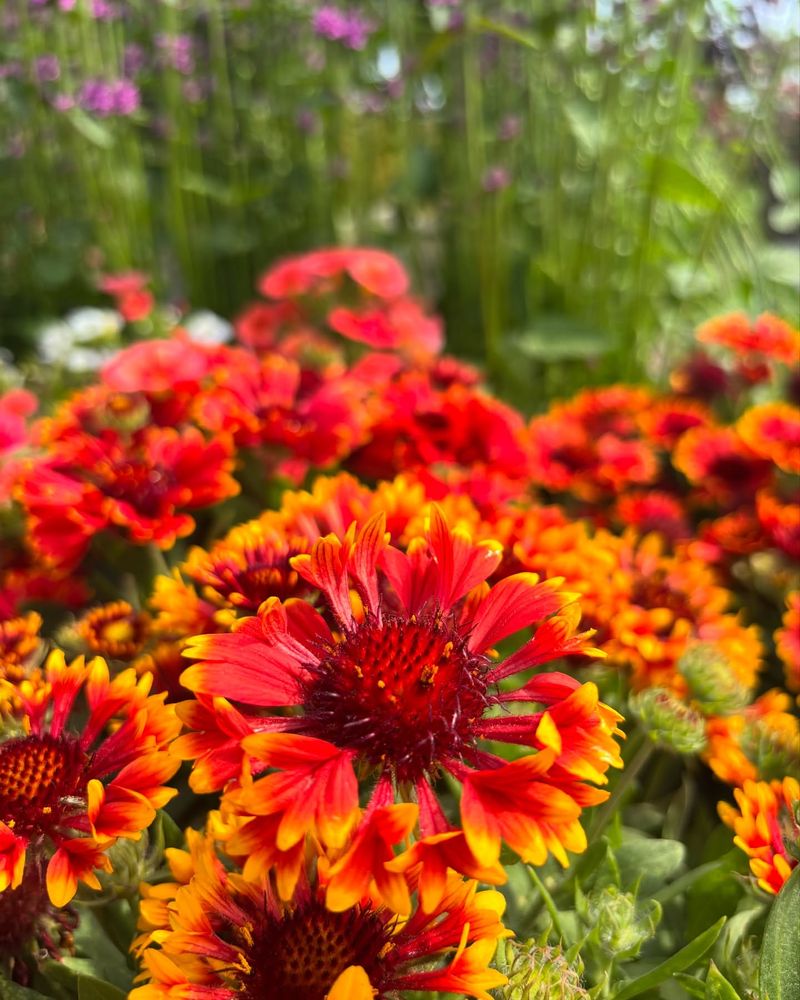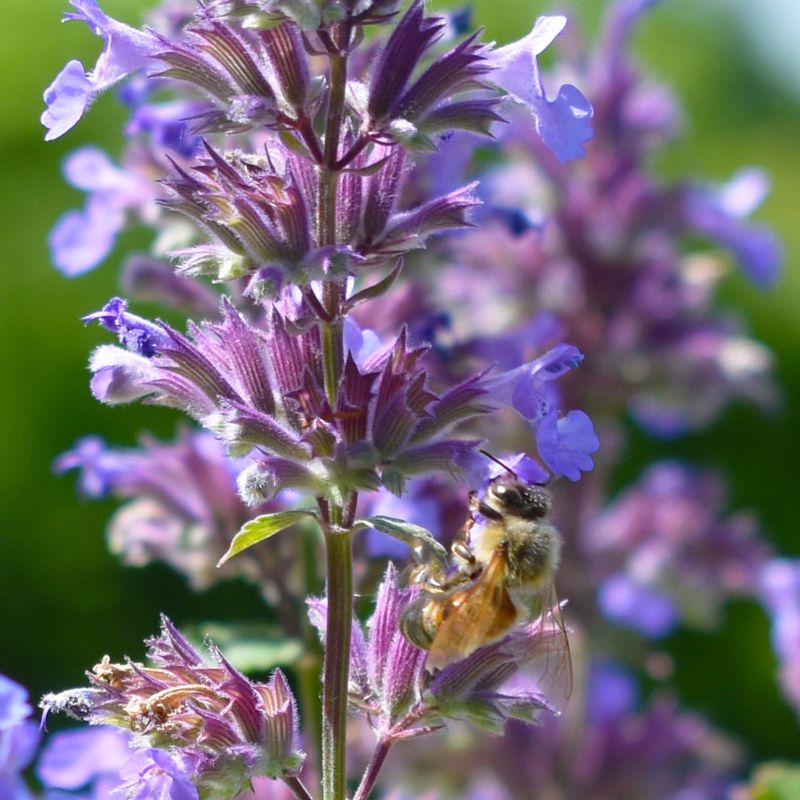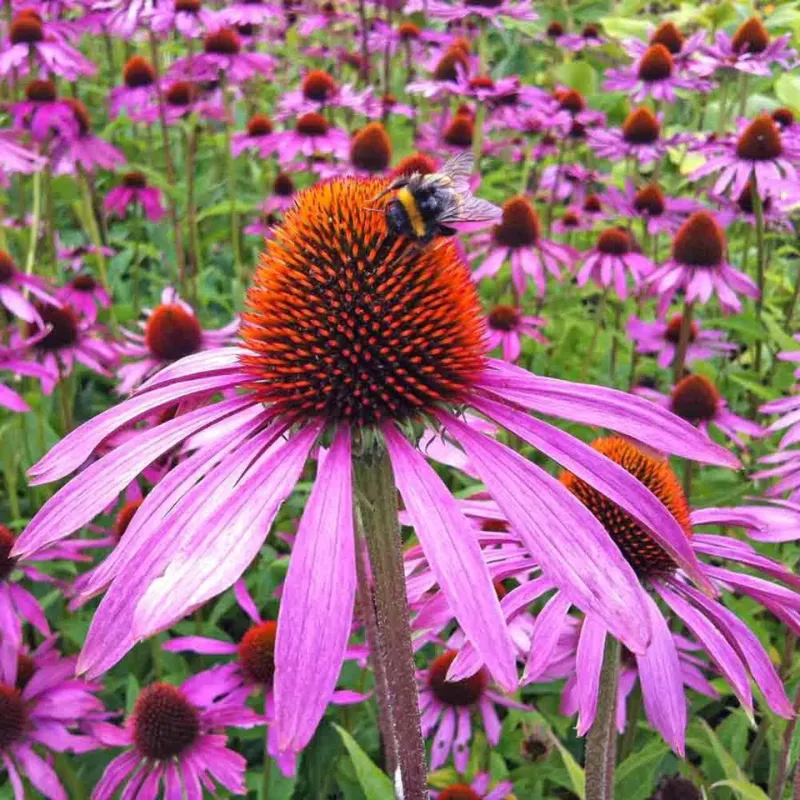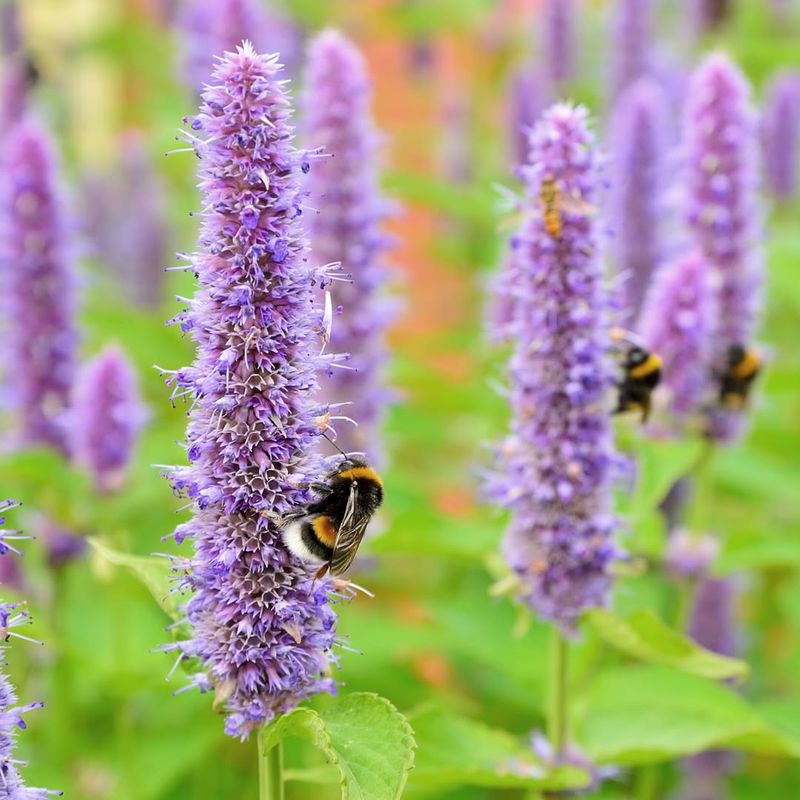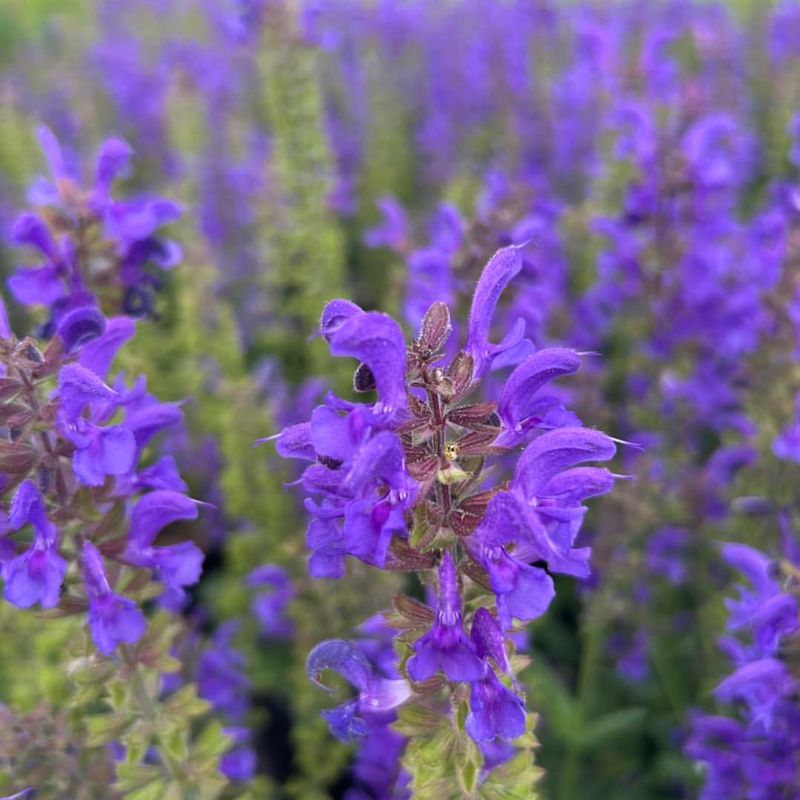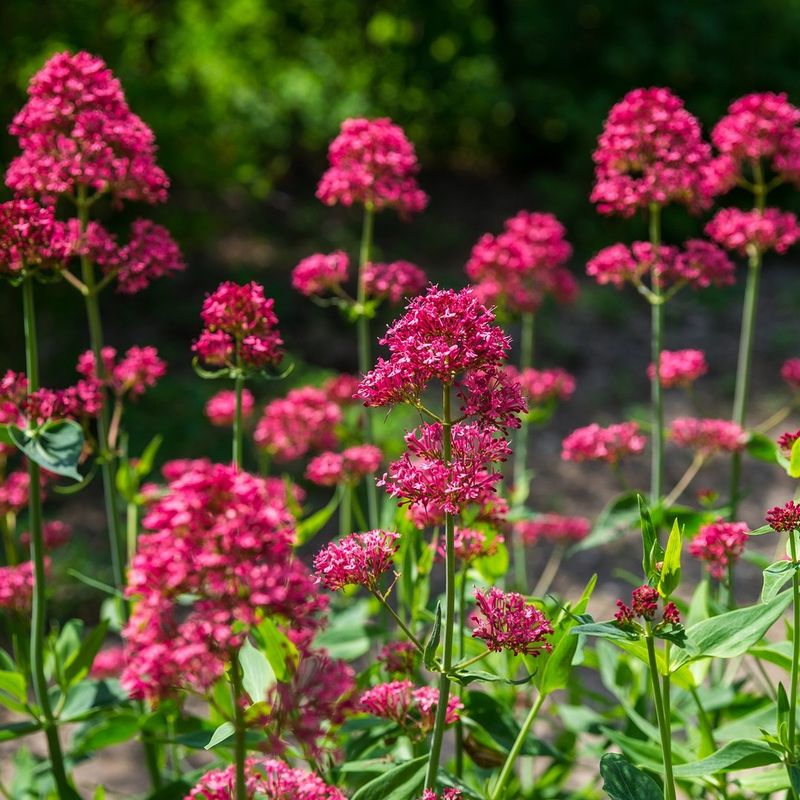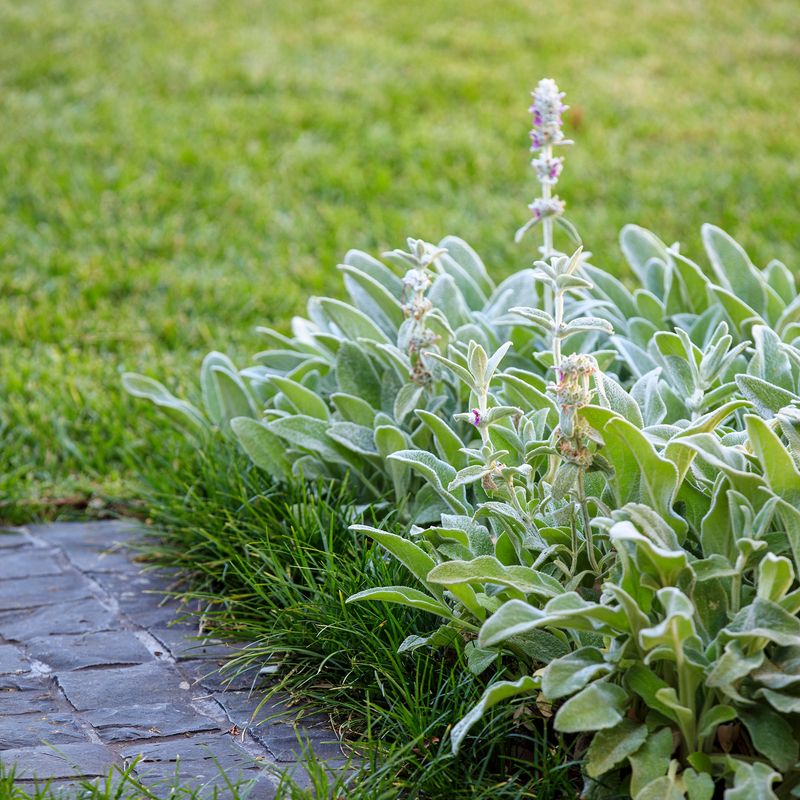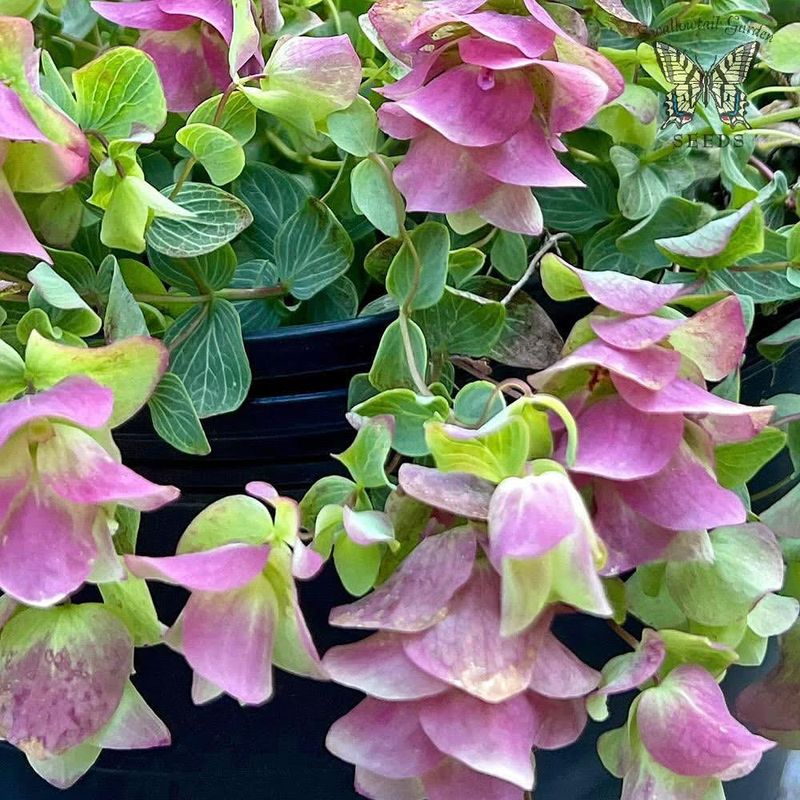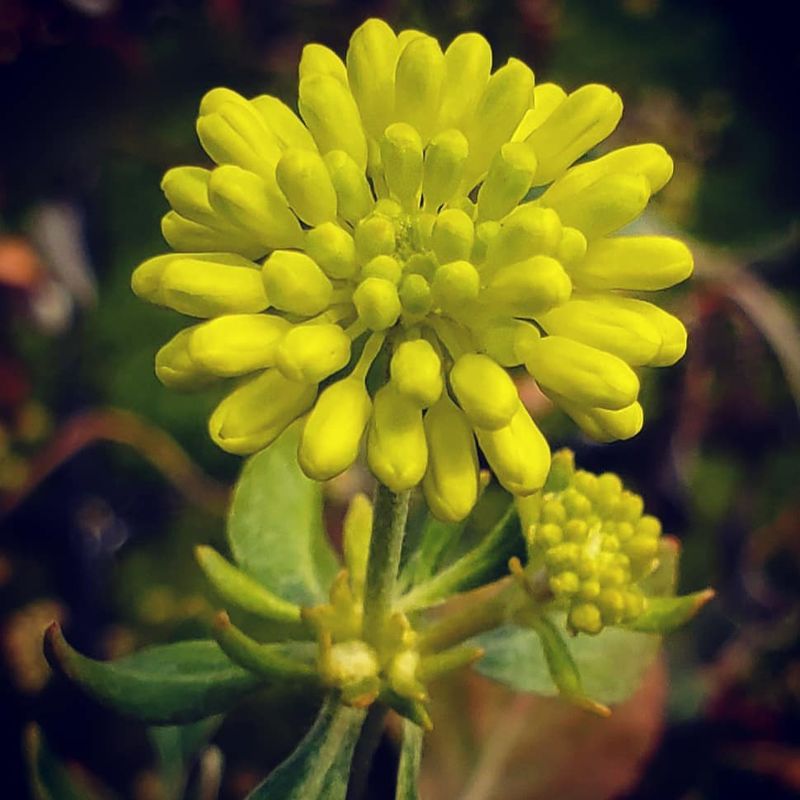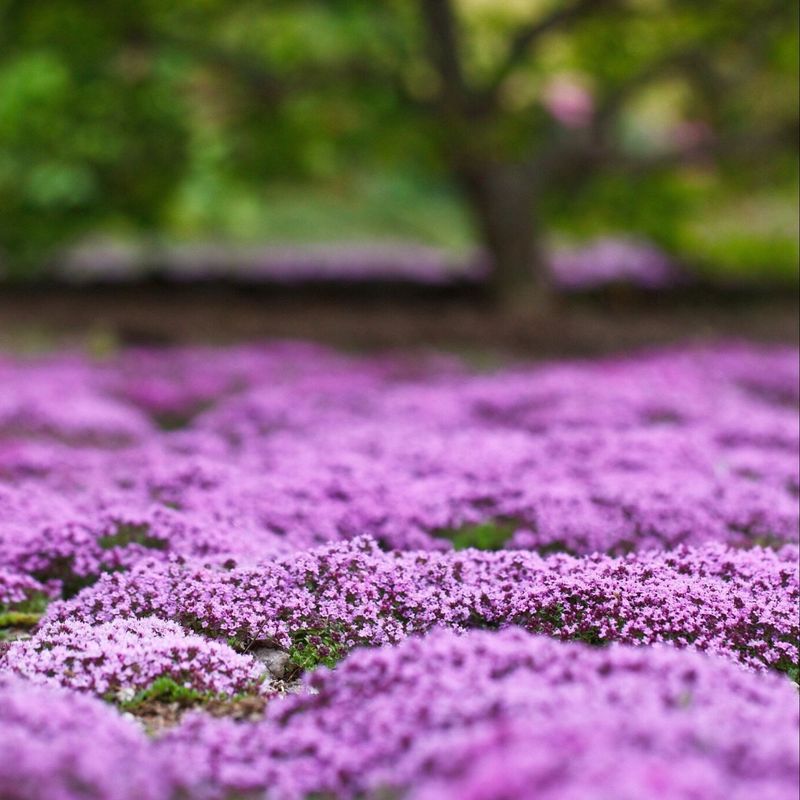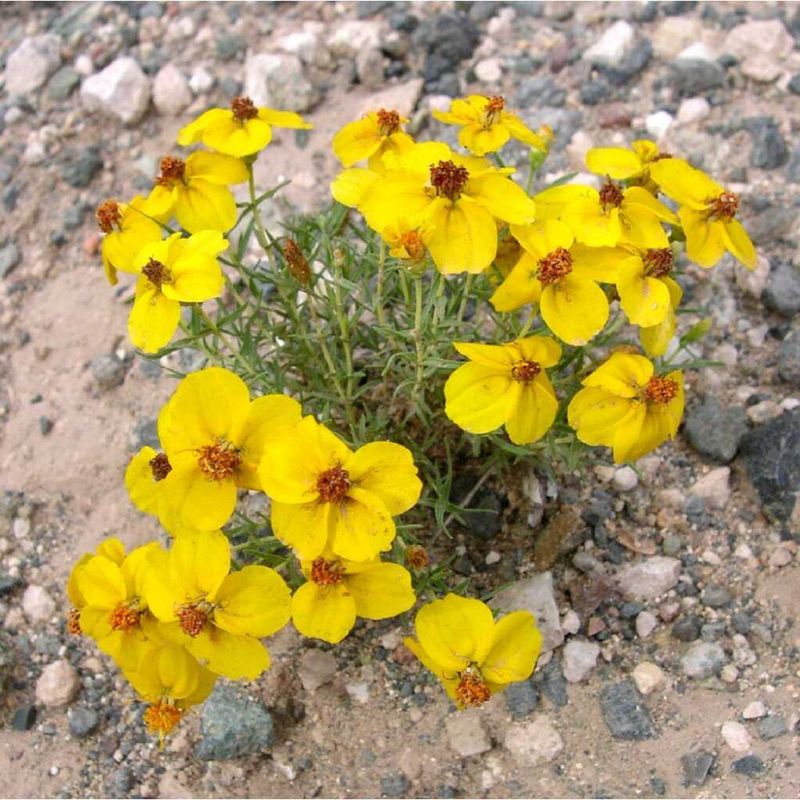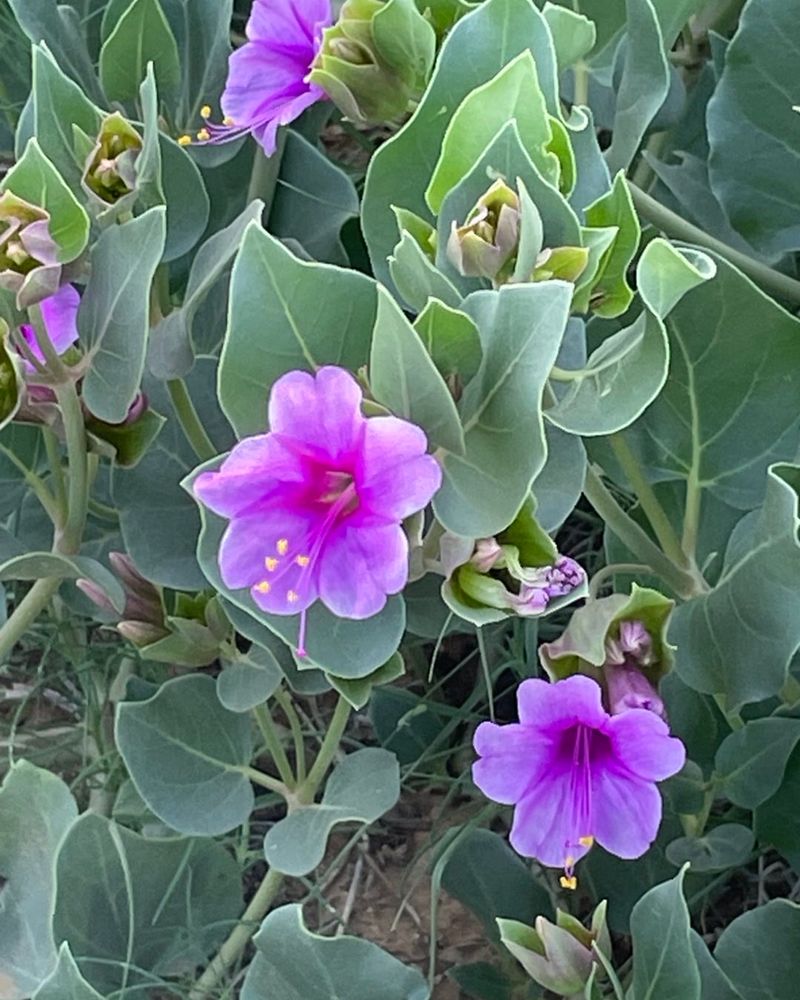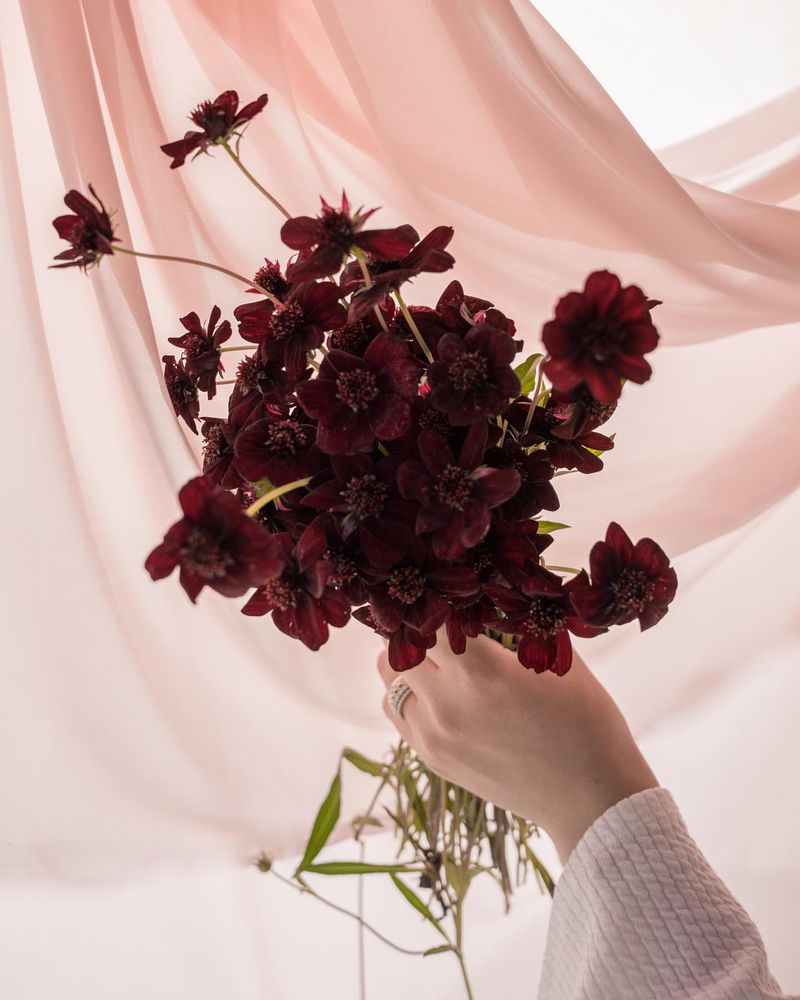Utah summers can be brutal, but your garden doesn’t have to suffer. These low-water perennials laugh at the heat, keep blooming in August, and ask for almost nothing in return.
If your yard needs fresh color without the constant watering, these drought-tough plants deliver beauty, staying power, and serious curb appeal—even in the thick of summer.
1. Russian Sage
Russian Sage creates a stunning purple haze in late summer gardens. Its silvery foliage and lavender-blue flower spikes stand tall despite the heat, attracting butterflies while deterring deer and rabbits.
Once established, this perennial barely needs water, making it perfect for Utah’s driest spots. Plant it in full sun with well-draining soil and enjoy its aromatic leaves when brushed against.
2. Yarrow
Flat-topped flower clusters in yellow, white, pink or red make yarrow a cheerful addition to any water-wise garden. Native Americans used this plant medicinally for centuries, valuing its healing properties. Yarrow thrives in poor soil conditions where other plants struggle.
Give it full sun and minimal water, then watch it spread into a drought-defying mat of ferny foliage that stays attractive even between blooming cycles.
3. Lavender
Fragrant and beautiful, lavender brings Mediterranean charm to Utah gardens. The purple flower spikes emit a calming scent that persists even after blooming ends, while gray-green foliage provides year-round structure. Plant lavender in gravelly soil with excellent drainage.
Morning sun with afternoon shade works best in Utah’s hottest regions. Harvest stems for drying when flowers first open to capture the strongest fragrance for sachets and cooking.
4. Sedum ‘Autumn Joy’
Succulent leaves store water like natural reservoirs, allowing Autumn Joy to sail through August without complaint. Its flat flower heads start pale green, then transition to pink and finally rich copper-red as fall approaches. Butterflies adore these blooms while deer leave them alone.
Plant in full sun with well-draining soil and forget about regular watering. Cut back spent stems in early spring rather than fall to provide winter interest and protect the crown.
5. Blanket Flower
Fiery red and yellow daisy-like blooms cover blanket flower from early summer through frost. Native to North America’s prairies, these tough plants evolved to handle drought, poor soil, and intense sun without missing a beat. Deadhead spent flowers to encourage continuous blooming through August.
The hairy stems and leaves help conserve moisture by reducing water loss. Blanket flowers self-seed readily, creating natural colonies that return year after year with minimal care.
6. Catmint
Soft gray-green foliage erupts with lavender-blue flower spikes that bees simply can’t resist. Unlike its cousin catnip, catmint maintains a tidy, mounding habit that looks fresh even during August’s worst heat. Shear plants back after the first flush of flowers fades to encourage a second round of blooms.
The aromatic leaves deter rabbits and deer while attracting beneficial insects. Most varieties stay under two feet tall, making catmint perfect for garden edges and container plantings.
7. Coneflower
Bold purple petals surround prominent orange-brown centers on these native prairie flowers. Coneflowers stand strong through August heat, providing nectar for butterflies and seeds for goldfinches well into fall.
Modern varieties offer sunset colors from yellow to red, but the original purple remains most drought-tolerant. Plant in groups of three or more for best visual impact. Their deep taproots access moisture far below the soil surface, reducing the need for supplemental water.
8. Agastache
Also called hummingbird mint, agastache produces spikes of tubular flowers that attract pollinators by the dozens. The licorice-scented foliage remains fragrant even during drought, adding sensory appeal beyond just visual beauty.
Sunset hues of orange, pink and purple bloom prolifically from mid-summer through fall. Excellent drainage is crucial for winter survival in Utah. Plant agastache where you can enjoy watching hummingbirds dart among the flowers during late summer afternoons.
9. Salvia ‘May Night’
Deep indigo-blue flower spikes rise above tidy mounds of wrinkled green leaves on this European sage relative. ‘May Night’ begins blooming in spring but continues producing flowers well into August if promptly deadheaded.
Unlike culinary sage, this ornamental variety focuses on flowers rather than aromatic foliage. Its compact habit fits perfectly into water-wise borders. The dark blooms create striking contrast against silver-leaved companions like artemisia and lamb’s ears.
10. Jupiter’s Beard
Clusters of tiny star-shaped flowers form rounded heads in shades of ruby-red that persist through the hottest summer days. Jupiter’s Beard, also called Red Valerian, thrives in rocky soil, even growing happily in wall crevices where little else survives.
Hummingbirds and butterflies flock to the nectar-rich blooms. This Mediterranean native laughs at drought once established. Its blue-green foliage remains attractive all season, forming a bushy 2-3 foot mound that needs no staking.
11. Lamb’s Ears
Velvety silver leaves form soft rosettes that children love to touch. The fuzzy texture isn’t just appealing – it’s actually a drought adaptation that reflects sunlight and traps moisture near the leaf surface. Tall purple flower spikes appear in early summer but can be removed to focus on the foliage.
Lamb’s ears spread slowly to form attractive ground covers in sunny spots. Remove damaged leaves after winter to keep plants looking fresh as new growth emerges.
12. Ornamental Oregano
Unlike its culinary cousin, ornamental oregano focuses on showstopping flowers rather than flavorful leaves. Cascading stems bear hoplike bracts in shades of pink, purple and chartreuse that last for months. Perfect for rock gardens and wall crevices, these drought-masters create living waterfalls of color.
Most varieties stay under 10 inches tall but spread to 24 inches wide. The tiny flowers within each bract attract beneficial insects while the aromatic foliage deters many garden pests.
13. Sulfur Buckwheat
Native to Utah’s desert regions, sulfur buckwheat creates cushions of silvery foliage topped with sulfur-yellow flower clusters that age to rusty orange. This true local hero has evolved specifically to handle the region’s challenging conditions.
Bees and butterflies swarm the long-lasting blooms while the plant’s deep roots anchor soil on slopes. Plant in groups for best effect. The dried flower heads provide winter interest and food for birds, making this native plant valuable year-round.
14. Creeping Thyme
Forming a living carpet just inches tall, creeping thyme covers ground with tiny aromatic leaves that release their scent when stepped upon. Pink, purple or white flowers blanket the plants in early summer, with sporadic blooms continuing through August.
Plant between stepping stones or as a lawn alternative in small areas. The dense growth suppresses weeds naturally. While establishing, water weekly, but once rooted, this Mediterranean native handles drought with ease while attracting beneficial insects to its miniature blooms.
15. Prairie Zinnia
Yellow daisy-like flowers cover this native groundcover from June through September. Unlike garden zinnias, this prairie native grows just 4-6 inches tall while spreading to form drought-defying mats of green. Butterflies find these blooms irresistible even during August’s heat.
The narrow leaves conserve moisture effectively. Prairie zinnia thrives in poor, rocky soil where pampered plants would fail. Its compact size makes it perfect for garden edges and rock garden pockets.
16. Desert Four O’Clock
Magenta trumpet-shaped flowers open in late afternoon, giving this Utah native its common name. The blooms emit a sweet fragrance that intensifies as evening approaches, attracting sphinx moths with their long proboscises perfectly adapted to reach the nectar.
Large tuberous roots store water during drought periods. The sprawling stems create mounds up to three feet wide covered with heart-shaped leaves. Desert four o’clock goes dormant in winter, reemerging from its root system when soil warms in spring.
17. Chocolate Flower
Yellow daisy-like blooms emit a distinct chocolate scent in the morning hours, creating a truly unique garden experience. This New Mexico native has adapted to similar conditions as Utah, making it a natural fit for water-wise gardens.
Grayish-green foliage forms tidy mounds that remain attractive even when not in bloom. Chocolate flower self-sows moderately, creating casual drifts over time. The long taproot accesses deep moisture, allowing established plants to sail through August with minimal supplemental water.

